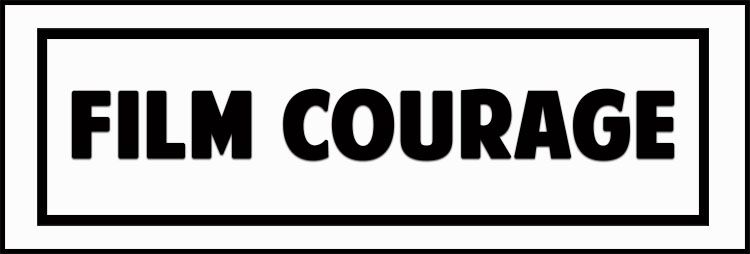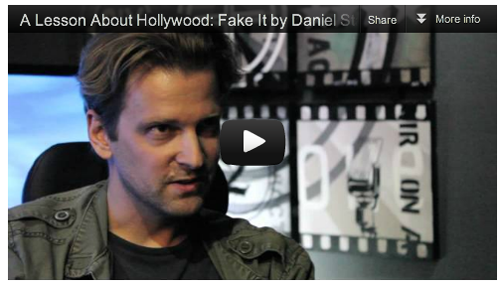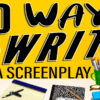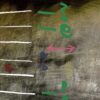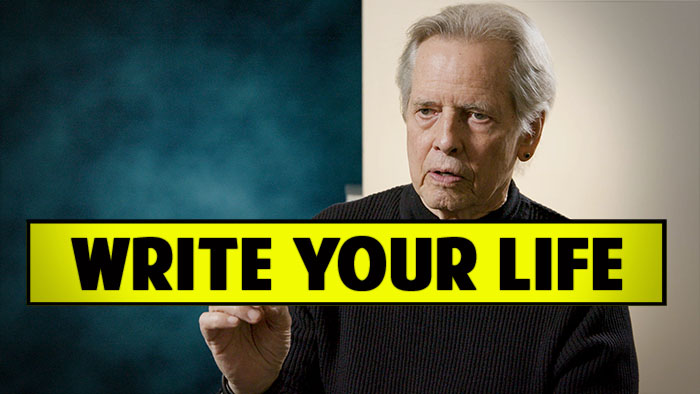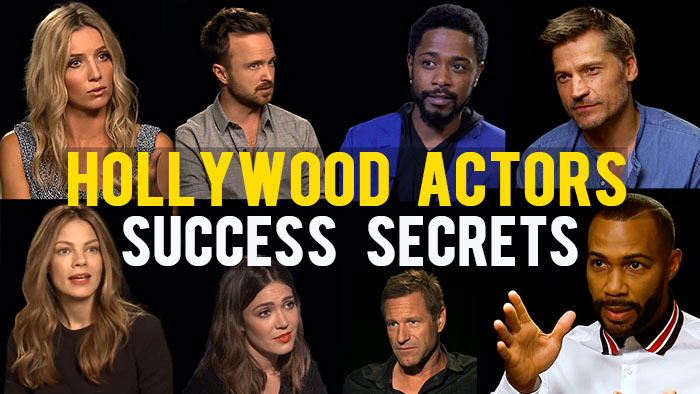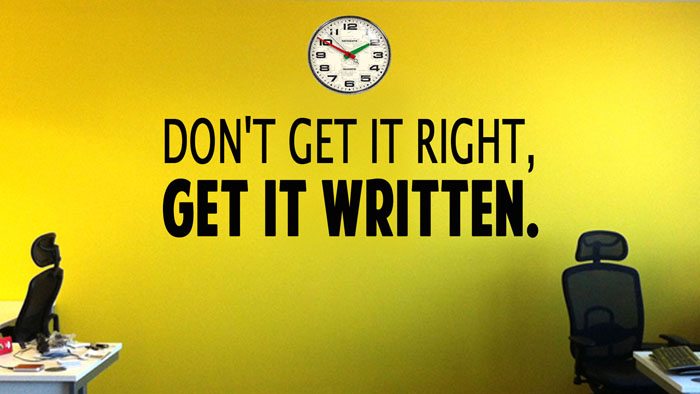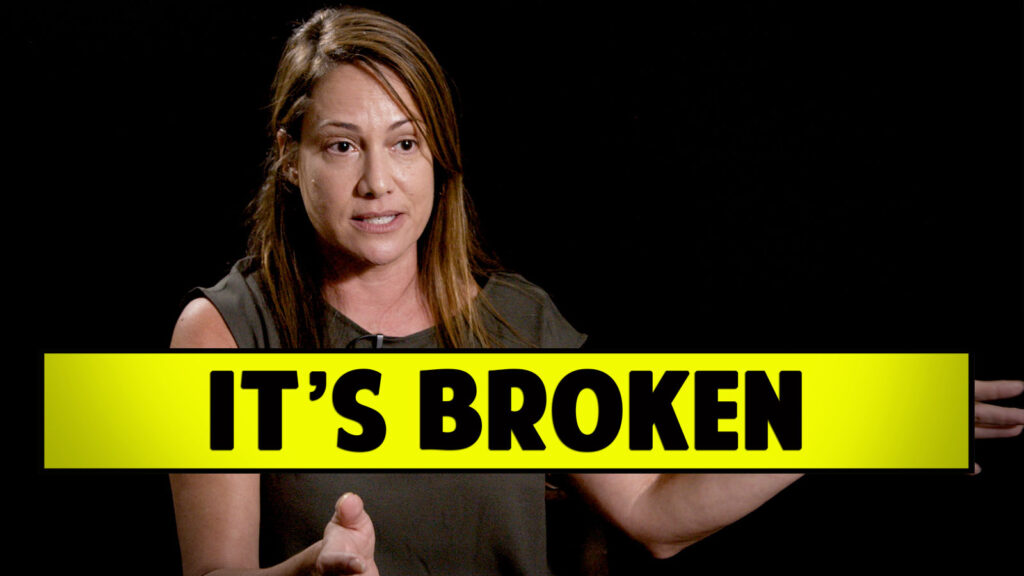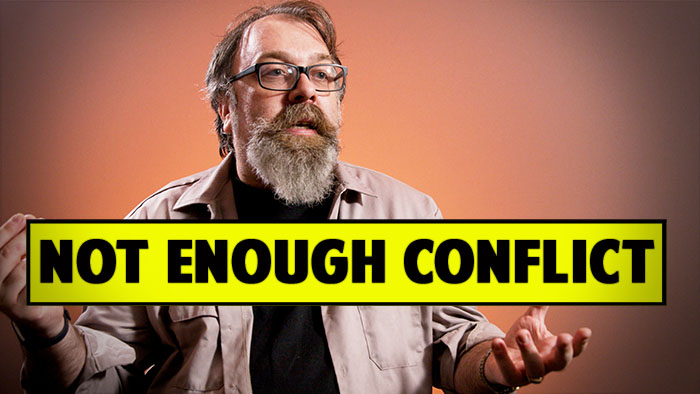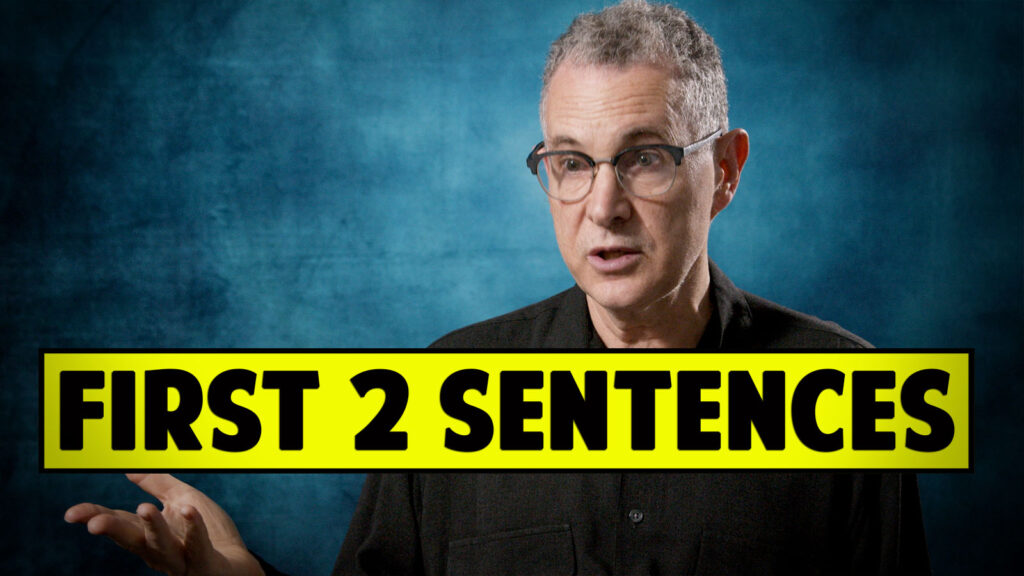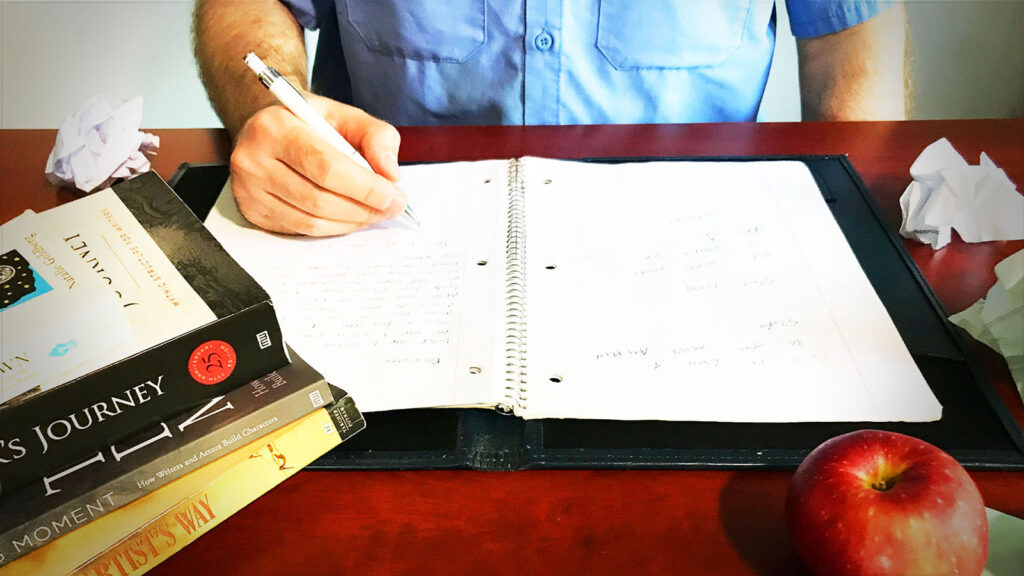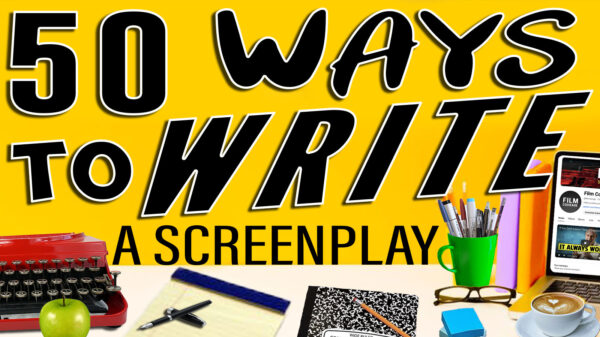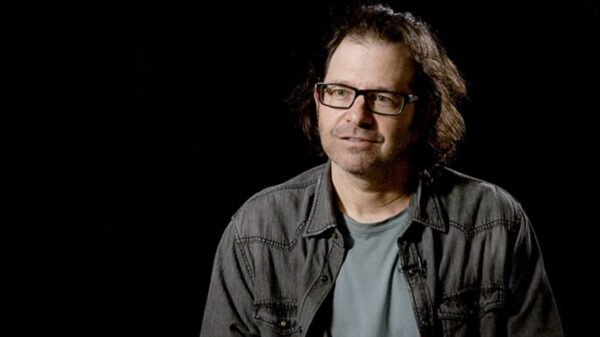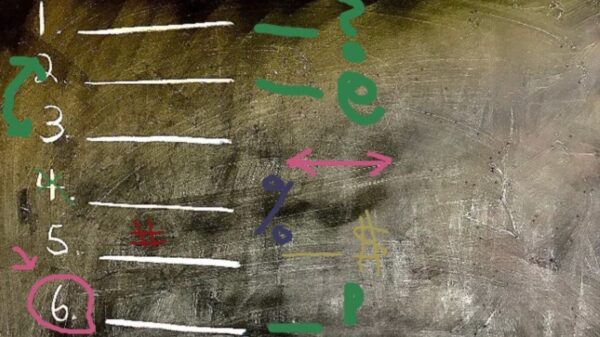The screening is almost over. It’s just a rough cut but I am excited.
I have been invited to sit on the jury of the SkenaUp festival in Kosovo – some of the most incredible days of my life – and one evening had been set aside for the jury members to screen their projects. My colleagues’ films have been met with standing ovations, and I am ready for mine. Last shot, fade to black… and… nothing. Complete silence.
Surely someone has written down my worst nightmare and is staging it in front of me in stunning 3-D.
I am walking down the steps, numb. I hear a sobbing from the dark below me. A girl is kneeling in the aisle, rocking back and forth, crying. Her friend in the seat next to her has his face in his hands, tears running down his forearms. I am still trying to process it all when an American girl comes jumping out of the dark, grabs me and screams: “You are a murderer! You shouldn’t be allowed to make movies!” Thankfully her friends pull her off me. There is complete chaos in the audience around me. Instead of the steady flow towards the exit that you’d expect after a movie, people are running back and forth. Soon there are little islands where people are gathering around friends who have broken down and are now being pulled onto their feet.
It’s like what I imagine the aftermath of a pipe bomb attack to look like. As if to add to my nightmare, one of the festival organizers comes up to me and whispers: “Whatever you do, don’t leave the theater. There is a mob gathering outside to deal with you.” A mob. In Kosovo. I am going to die here.
How on earth did it get to this?
It all had started a couple of years earlier.
The collaboration between me and the screenwriter of my thesis film at the American Film Institute hadn’t been much fun for either one of us. My relationship with the cinematographer and the editor was the opposite: we loved each other. So much so that when I got married he was the best man and we got her ordained to conduct the ceremony. To me this team was an emotional safety net I couldn’t imagine functioning without. When working on a film you spend day and night around each other for months. I was convinced that if you don’t surround yourself with people you genuinely adore you’ll be miserable at best, and at worst the project will implode and the world come to an end.
Many film school graduates work on their scripts and try to raise money for years before ever shooting a single frame. More often than not they never shoot anything again because nobody is going to give a first-time director the budgets their stories demand. We didn’t want to fall into that trap. We didn’t want to wait, or depend on anyone to give us a green light that would never come. We decided that scripts were for cowards and that it was a really good idea to just start shooting and figure out the story along the way.
At AFI they had urged us to focus on what you have – if you have access to a great location then develop something around that. If you know a famous actor, write a part for him or her. If you can get your hands on a camera that can achieve an unusual effect, make sure your story features it extensively. Don’t exhaust yourself struggling to acquire what you don’t have access to – lean on what you do have access to.
We had access to nothing. No fancy location, camera nor actor. And least of all: money. We weren’t going to shoot a period drama on 35mm, we weren’t going to build any sets nor even light anything. The decision to shoot documentary-style was born out of poverty.
Today, eight years later, found footage is not a terribly revolutionary idea anymore. In 2004 it still felt fresh. After all it was years before that style turned into the jolly juggernaut spawning 2007’s DIARY OF THE DEAD, PARANORMAL ACTIVITY and REC, 2008’s QUARANTINE and CLOVERFIELD, 2009‘s DISTRICT 9, 2010‘s CATFISH and THE LAST EXORCISM, 2011’s APOLLO 18 or 2012’s THE DEVIL INSIDE and CHRONICLE. Back then we thought we were pretty clever.
At film school everybody had always tried to make the most polished film possible. You were dreaming of a crane shot. Or, better, a helicopter shot. Hollywood had to embrace you if you could only get that helicopter shot. It wasn’t until later that we realized that was nonsense. If Hollywood wants a movie to look like it was shot by Michael Bay… Hollywood’s going to get Michael Bay. If anyone was supposed to “embrace” us we had to try the opposite direction: fully embrace the unpolished rawness and revert to the poor man’s special effects of characters and story. The challenge was to come up with a narrative that was enhanced by a low-fi look, rather than be cheapened by it. We decided to tell the story of a film student who is documenting the weeks leading up to a friend’s suicide.
It turned out that we did have access to one resource after all, and a mighty one: we lived in Los Angeles, a city filled with hugely talented actors that can’t find work. At the time I interned with legendary casting director Mali Finn (TITANIC, THE MATRIX, LA CONFIDENTIAL). I begged her to cast my movie – and she did.
Improvisation requires a completely different skill set from breathing life into scripted lines. As we didn’t have a script I was looking for actors that could be something like co-writers on set. That was probably the most important decision I made throughout the entire project. A lecturer at AFI had once said: “The directors that create really great films are the really good ones and the really bad ones.” Now, years later, I finally understood what he meant. With bad directors actors will go into oh-shit-mode: “That guy has no idea what he is doing, I better stay alert and work twice as hard to cover my back and avert disaster.” Nobody wants to be a bad director, obviously, but I am not exactly a genius filmmaker quite yet, and so I found wisdom in that. It’s the liberating power of “I don’t know.” To not let your ego and your vanity stand in the way of allowing yourself to say “I don’t know, let’s find out.” Previously that had always been my shameful little secret – I didn’t know. I had to see it before I knew whether it worked, whether I liked it or not. But I had to pretend, right?
Pretend to have a vision; pretend to have everything under control. People were expecting that from the director. I learned that a wonderful thing happens when the director says “I don’t know. ” Everybody wakes up. Everybody becomes engaged. “Wait, he doesn’t have a finished blueprint that he just wants me to execute? My opinion can influence how we are doing this scene? There is room for me to actively shape my character’s arc? Let’s do it!” It’s where real collaboration starts. It’s not your project anymore, it’s everybody’s.
The film is not filtered only through one tiny, dictatorial mind anymore, it’s the collective conscience of a whole group of people. A group that you get to put together, mind you. Mali Finn always said:
“Don’t cast actors purely based on their acting; cast them for who they are as a person. That’s the place they’ll always go back to. When they are tired, when they run out of ideas… that’s what they’ll pull from.” I think she’s right. So – like any good bad director – I let them pull. I couldn’t believe the gifts I was suddenly given with every single take.
Working on a non-budget project came with restrictions, but more than anything it came with this incredible freedom. We didn’t owe anything to anyone. No producer’s notes needed to be dealt with, there were no studio executives to negotiate compromises with, no financiers to repay. There was not an ounce of creativity lost on politics – something any director with a budget will tell you occupies most of his or her day. Had there been any outside influence with the slightest idea of the industry they would undoubtedly have told us that we had all bases covered to ensure our movie was going to be unmarketable. Shaky standard definition video? Check! 4:3 aspect ratio? Check! Crowd-pleasing theme of suicide? Check! Name actors? Who needs them? Happy ending? Who are we? Walt Disney?!
There is the old wisdom that says you can’t get something done well, fast and cheaply at the same time – you are always going to have to make do with just two out of the three. If you want it done well and fast it’ll cost you. Do it cheaply and fast and the outcome won’t be very good. Doing it well and cheaply will take a long time. We opted firmly and squarely for the latter. And God knows they weren’t kidding with it taking time. For one thing we had to take breaks of weeks at a time because everybody had to earn a living working on other projects.
Or – in my case – become a semi-thought-after photographer of Bar Mitzvahs. What I had planned to be a two-week shoot ended up taking three years. What had sounded like such a good idea at the time – not to hold ourselves up writing a script – meant that there were a million subplots to explore and not road map. An actor would say on camera “My brother painted that” (information that was news to everybody) and the next day we’d be on our way to shoot a scene with the brother painting in his garage. Had that brother mentioned that his mother was a missionary in Zimbabwe… we probably would have been on our way to the airport.
That incredible freedom slowly showed its dark, fateful side. Because shooting didn’t cost anything (we were taping over dailies of THE DAY AFTER TOMORROW on donated DV tapes) there were no deadlines, no reason to ever be done. The saying goes “Movies are never finished, they are abandoned.” But you need an outside force to make you abandon it. We didn’t have one. If we ran into trouble in the editing room we didn’t say “By golly, we will sit here until we figure this out,” but “Where is the camera, I’ll call the actors, we’ll just shoot some more!”
For years it felt like the last shooting day was just around the corner. Every now and then we would cut a trailer to get the actors excited again – which bought us another couple of months. That there was never a full-scale mutiny is a mystery to me. On the crew side it was probably paying off that I was working with my best friends. On the cast side I can only think that it was Mali Finn’s advice to cast actors for their character for who they are as people. I can’t thank this group enough. If one of them had pulled out, the whole thing would have gone to hell.
Instead, one snowy winter, it went to Kosovo, to that festival where people weren’t happy campers.
I did make it out of the theater alive back then. I spent a sleepless night in the hotel pacing up and down. During breakfast I ran into a girl who looked like she had drowned. She said that she cried all night and that she had called her parents at 4 a.m. because she was scared she might harm herself. She asked me the same question many had asked me the evening before, “Why?” Why had I done that to them?
What did I want them to take away from it? To learn? The truth was that I had never thought about what I was giving the viewers in exchange for crushing their souls. I had been so focused on doing it, on seeing if it was possible to evoke certain emotions from an audience that it became self-serving. I hadn’t brought an answer for her, and it felt horrible.
When I got back to LA I tried to explain that experience to the rest of the team. I knew that I wasn’t succeeding. For three years they had worked so hard on creating something that would have an impact on an audience and now I wanted to re-cut it to make it less dark? I couldn’t blame them for their skepticism. Like so many times before they got on board regardless and we tweaked a couple of key moments, among them the ending.
When we premiered at SXSW in March 2008 it felt that we had finally found a good balance, and in November of the same year, shockingly, the film won the audience award at AFI FEST. Now the list of winners would read: LIFE IS BEAUTIFUL, CITY OF GOD, IN AMERICA, HOTEL RWANDA, TSOTSI, THE DIVING BELL AND THE BUTTERFLY and… A NECESSARY DEATH. It still feels completely unreal to me. As if the guy who wrote down my worst nightmare and staged it in Kosovo had decided to create a wonderfully corny sequel to make up for it.
It still took four more years but now the film is finally getting released, thanks to the brave people at Filmbuff and grandmaster Matt Dentler, who championed it since he first programmed it at SXSW. That journey we started in spring of 2004 is coming to an end, and the reward of it all will be a little box on my shelf with a silver disc in it. Closure. Check!
Check out FilmBuff’s Blog here!
A NECESSARY DEATH is currently available on Amazon VOD, Xbox, CinemaNow, Playstation, Vudu, and DVD, and on iTunes! Click here to see the trailer or view below.
Daniel was born and raised in Hamburg, Germany, where as a teenager he was host of a radio show and editor of a youth magazine. He toured with a theater, studied drama and published a play before he went to Belfast, Northern Ireland, as a peace worker. Two years later he returned to Germany to go to film school and study screenwriting at the Filmakademie Baden-Wuerttemberg in Ludwigsburg. He wrote a TV movie which got nominated for Germany’s most prestigious media award and directed a documentary on rock musician Nick Cave. Daniel moved to Los Angeles and graduated from the American Film Institute’s directing program. His thesis film got nominated for the ASC award. In the following three years he made short films, wrote songs for local singers, sat on a film festival jury in Kosovo, became a certified hypnotist and hitch-hiked across the US. In 2008 Daniel’s first feature film, A NECESSARY DEATH, premiered at SXSW in Austin, Texas, before winning the audience award at AFI Fest later the same year. His second feature, THE LAST EXORCISM, premiered at the Los Angeles Film Fest in 2010, was distributed by Lionsgate and grossed over $65 million worldwide. The film and/or its actors got nominated for the People’s Choice Award, two Independent Spirit Awards and an MTV Movie Award. It won an Empire Award as well as awards in Sitges and Toronto.
Filmmaker Daniel Stamm (A Necessary Death, The Last Exorcism) gives us his advice to actors in the auditioning process, tricks that he uses on set with actors to get what he wants, and techniques he uses to get actors to bond with their fellow actors.
MORE FILM COURAGE
VIDEOS INTERVIEW WITH DANIEL STAMM HERE!



